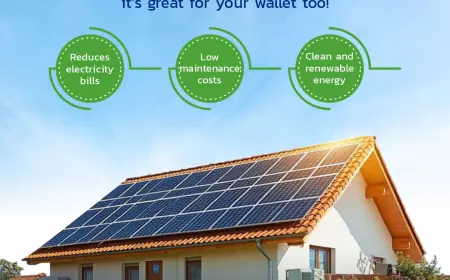Vertical Farming Takes Root: A Look at Soaring Growth in Sustainable Agriculture
The report is a comprehensive presentation of trends, forecast and dollar values of the global vertical farming market.

Vertical Farming: A Beacon of Sustainability in a Changing World
The report is a comprehensive presentation of trends, forecast and dollar values of the global vertical farming market. According to the report, the global vertical farming market is projected to grow at a CAGR of 22.1% over the forecast period of 2019-2025.
Infinium Global Research's report isn't just a static snapshot of the vertical farming market. It delves deeper, exploring the forces that are propelling this industry forward. These "driving forces" could be anything from the increasing demand for locally-sourced food to the environmental benefits of vertical farming. But the report doesn't shy away from the challenges either. It identifies the "roadblocks" that could potentially slow down vertical farming's growth, such as high upfront costs or the need for further technological advancements
Ask For the Latest Research Report Sample: https://www.infiniumglobalresearch.com/reports/sample-request/14679
While traditional agriculture grapples with its environmental footprint, vertical farming offers a ray of hope. Traditional agriculture faces a major hurdle: a lack of land. Urbanization, deforestation, and climate change are all shrinking the space available for growing crops.
This innovative technique utilizes stacked layers to maximize space, allowing food production to flourish even in urban areas.
Water Warriors: Vertical farms are water conservation champions. They use up to 95% less water compared to traditional methods, making them ideal for drought-stricken regions.
Chemical-Free Feast: Vertical farms create a controlled environment, eliminating the need for pesticides and herbicides. This translates to cleaner crops and a healthier planet.
Nature's Symphony: Some vertical farms embrace aquaponics, a clever system where fish and plants work together. Fish waste provides vital nutrients for the plants, while the plants filter the water for the fish.
For more insights on this report speak to our Analyst @: https://www.infiniumglobalresearch.com/reports/enquiry/14679
Market Dynamics
Driver: Embracing vertical farming shrinks agriculture's environmental impact.
The vertical farming market presents a fascinating dichotomy. On one hand, it's a champion for sustainability. By reducing water usage and eliminating the need for pesticides, vertical farming offers a path towards a greener agricultural future. This is a major driver for the industry's growth.
Restraint: The lack of technical expertise to operate complex vertical farming systems is a major constraint
However, there are also hurdles to overcome. One key restraint is the lack of a skilled workforce. Vertical farms are complex ecosystems, relying on technology like sensors, automation, and even AI. Operating these systems requires a specialized skillset that's not yet widely available.
Opportunities: Soaring demand for fresh produce in Asia Pacific and the Middle East presents a promising opportunity for vertical farming.
Despite these challenges, exciting opportunities are emerging. The Asia Pacific and Middle East regions hold immense potential. In Asia, for example, a booming population and growing disposable income are driving the demand for fresh produce. This creates a prime market for vertical farms.
Challenges: Developing more efficient lighting solutions is crucial for long-term sustainability.
The final hurdle is the issue of cost. Vertical farming currently faces a significant challenge: high energy consumption. The reliance on artificial lighting systems translates to high operational costs. This needs to be addressed for vertical farming to become truly scalable and economically viable
What's Your Reaction?
 Like
0
Like
0
 Dislike
0
Dislike
0
 Love
0
Love
0
 Funny
0
Funny
0
 Angry
0
Angry
0
 Sad
0
Sad
0
 Wow
0
Wow
0



















































